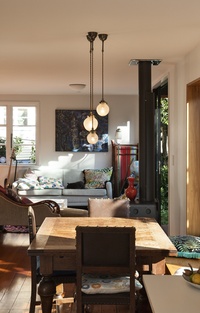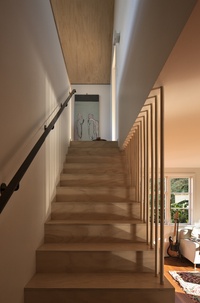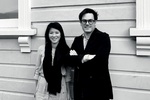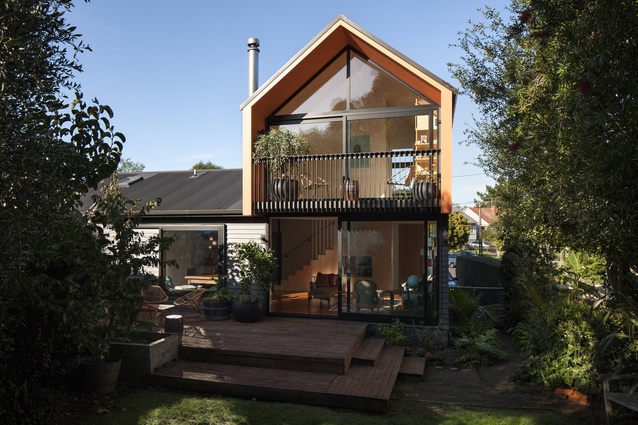[ad_1]
The adage: ‘more than the sum of its parts’, perfectly describes this alteration and addition project carried out by architect Aaron Paterson. The original house, modest by modern standards at just 90m2, has had an even smaller addition, at 32m2, placed on top. However, the resulting increased amenity is that of a much larger house, thanks in part to the newly created view corridors.

Image:
Simon Devitt
“The client has this great little house in the Three Kings/Mt Roskill area of Auckland that backs onto the final remaining ‘king’ with a really lush section that runs up to the top of the volcano. What they were looking for was something that really embraced the unusual landscape and that related to the existing fabric of the street, which is all state houses,” says Paterson.
“From the outset, the client really wanted to be elevated — something almost akin to a viewing platform — so the idea was to go up and embrace both the street and the mountain and so the resulting form is a pop-up gable that drapes itself over the existing house and contains a master bedroom with ensuite and a second living area. This extension is only about 32m2 so everything is a bit micro but it works really well. It’s got everything they wanted and because it looks out onto the yard it seems grander than it is.”
Narrow, inset decks at both ends of the addition are complemented by large-scale sliding doors that allow the space to be opened to the outdoors, creating a connection to either the street or the mountain. The remainder of the project centred on making the connection between the existing house and the addition seamless, updating the kitchen and addressing the lack of a formal entry to the house, says Paterson.

Simon Devitt
“Originally you had to go around the back and through some bi-fold doors if you wanted to enter the house. Our thought was, if we were going to be opening the house up to insert the addition upstairs — which was going to require some kind of supporting structure — then it only made sense for that to allow for the inclusion of a formal entry to the house.
“Now, the house looks like a real beacon as you come up the road and you see this gable form that’s sort of draped over this bungalow; it feels a lot more vertical and it’s completely changed the way the house relates to the mountain and to the streetscape.”
Back inside, the architect borrowed some space from one of the bedrooms to incorporate an open staircase, which in turn, features built-in storage, giving it a furniture-like dual purpose.
“Because we’ve given the stairs an open treatment the second living area feels really connected to downstairs, yet when you’re in there it’s a really cosy environment. We drew on a Japanese sensitivity where every square metre of the house is maximised and has something of significance, so that, even though we were not building something of voluminous proportions, you can still have a sense of grandeur and something you wouldn’t expect.”

MATERIAL SELECTOR
Architects Aaron Paterson and Liz Tjahjana explain their choice of colours for the Pop-up Gable House.
The orange-painted finish is a very distinctive design decision; how did it come about?
The house is mainly clad in a dark colour in order to unify the pop-up gable to the existing bungalow. The orange lining to the fascia and decks at either end of the gable was a key design decision which highlighted the roof form of the gable and reflects the fun, playful nature of the project.
Why did you choose ‘clementine’ and what type of paint is it?
Clementine is part of Resene’s Karen Walker range. We love the shade as it complements the site’s lush greenery and suits the client’s bold preferences.
How often will it need repainting in the future?
A standard recoat period of 7–10 years.
Click here to see more Houses Revisited. And sign up to our email newsletters to receive Houses Revisited straight to your inbox.
Note: These are stories from our archives and, since the time of writing, some details may have changed including names, personnel of specific firms, registration status, etc.
[ad_2]
Source link











